Learning how to draw from scratch, months 1-3
a year ago
For a few months now, I've been learning how to draw. My end goal is to paint traditional paintings, but that requires a level of fundamentals I can't even grasp yet, considering I've hardly ever seriously tried to make art. To that end, I'm taking a very systematic approach to learning to draw, trying to emulate how I would learn to do so in a (very squished) formal learning environment. Since I'm learning from my living room, I need to build a lot of structure for myself to keep things efficient, and more importantly, fun.
I'm including some of these practices in the blog post, which for me took a lot of courage. They're of course very amateur and I'm just including them to hopefully keep a timeline of my progression as an "artist".
To keep things fun (without which I would feel no motivation to draw) I split my time between serious studies and fun doodling. My serious studies include following online courses (especially drawabox's free lessons), copying art that inspires me, or focusing hard on a weak point, like a specific point of anatomy. My fun drawing time is mostly spent drawing memes or goofy pictures of my friends.
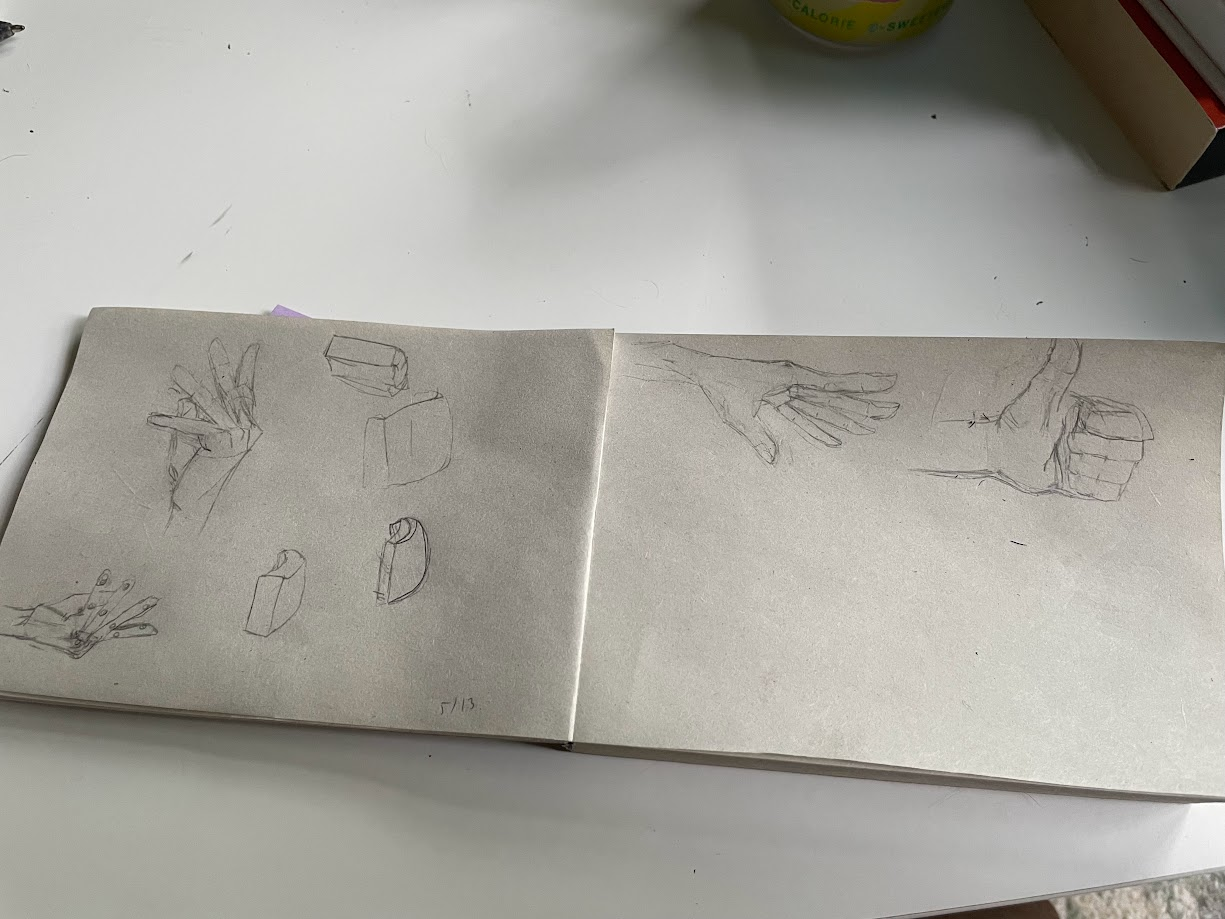 Studying hands, every beginner artist's mortal enemy
Studying hands, every beginner artist's mortal enemyI started off trying to dive right into anatomy using pencil and paper. I drew the major regions of the skeletal system over and over - ribcages, pelvises, skulls, etc. In doing so I learned a lot about how the body works, but I skipped a lot of steps that made it very difficult to apply to an actual drawing. Namely, I didn't really understand perspective or how light works, or even how to properly draw a line.
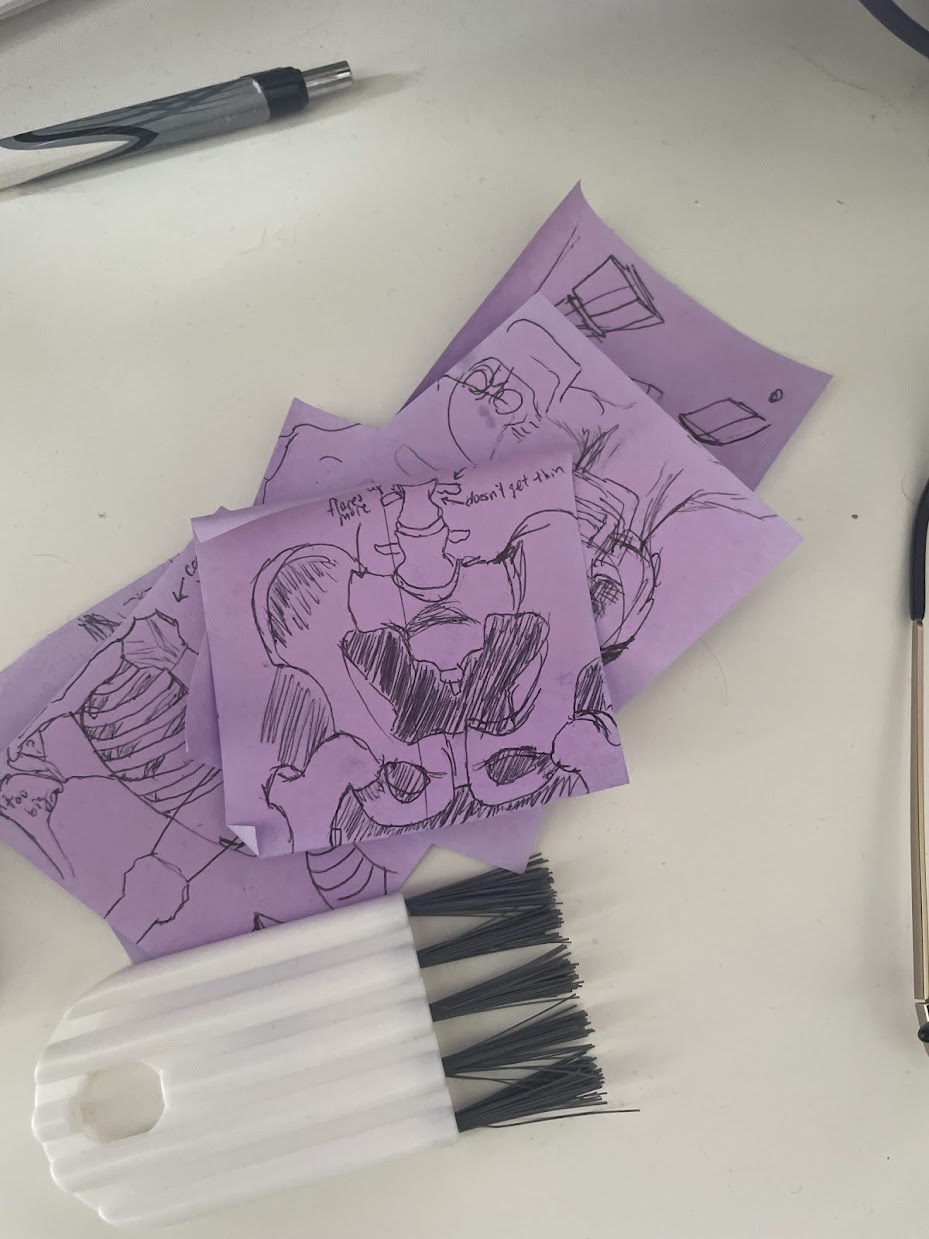 I drew a lot of anatomy, over and over!
I drew a lot of anatomy, over and over!That's when I found out about drawabox. It's a free series of lessons on a website that takes you through the very basics of perspective and drawing three-dimensional things. For the next few weeks I drove myself through that course, doing most homeworks just a little, and saving the ones I really liked for later practice. It suggests using only pen and paper for the whole course, but I bought a cheap drawing tablet (HUOIN Inspiroy 2) since I hated going through so much paper.
The course took me from literally drawing a line (using your shoulder, not your wrist!) all the way to using construction to draw an insect. In doing so, I learned a very technical approach to how 3D things translate to a 2D plane. Although I found the course had its flaws, the structure of it was invaluable in learning these fundamentals. I also learned how to use Krita at a beginner level, which is enough for me since my long-term goal isn't to draw digitally, as fun as it is.
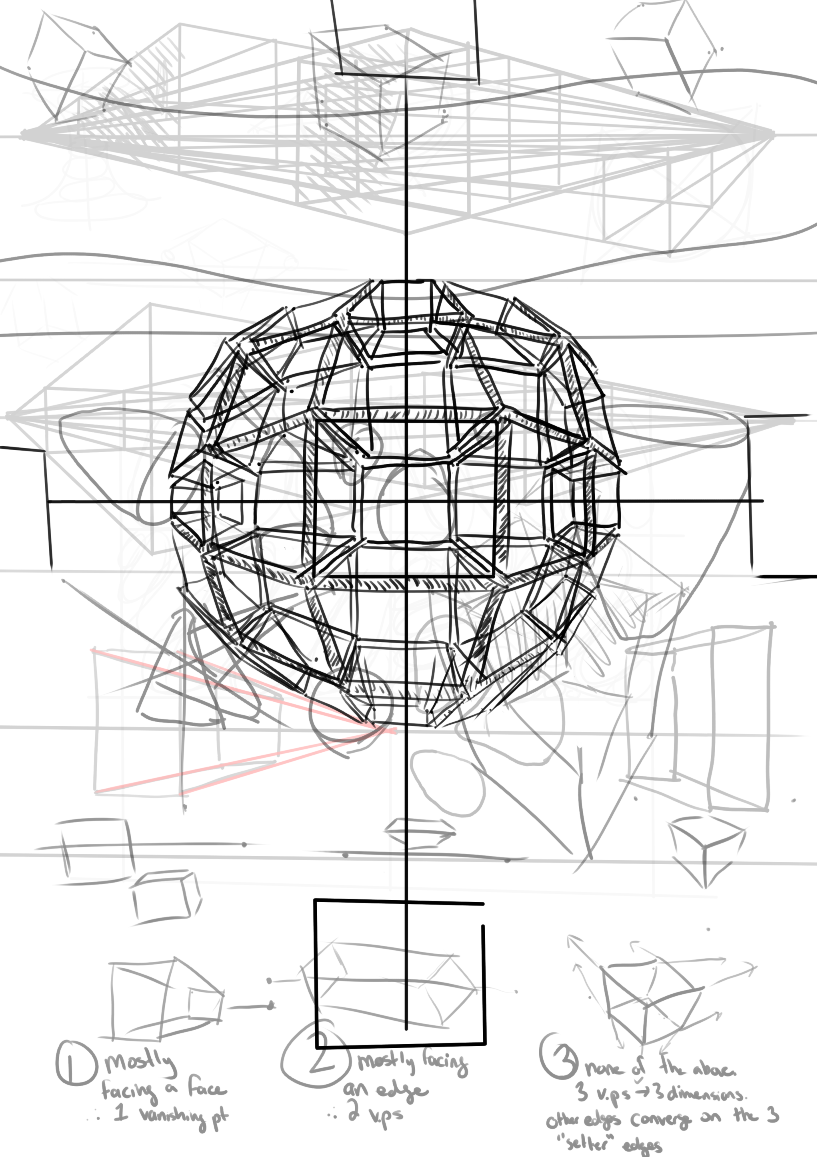 Drawabox made me, well, draw a lot of boxes
Drawabox made me, well, draw a lot of boxesOnce you reach the part of the course where you're applying these fundamentals to drawing organic forms, it turned into a series of demos you can follow. I started following it for a bit, drawing some plants and insects. However, following demos wasn't really how I wanted to learn, so from there I went off on my own again.
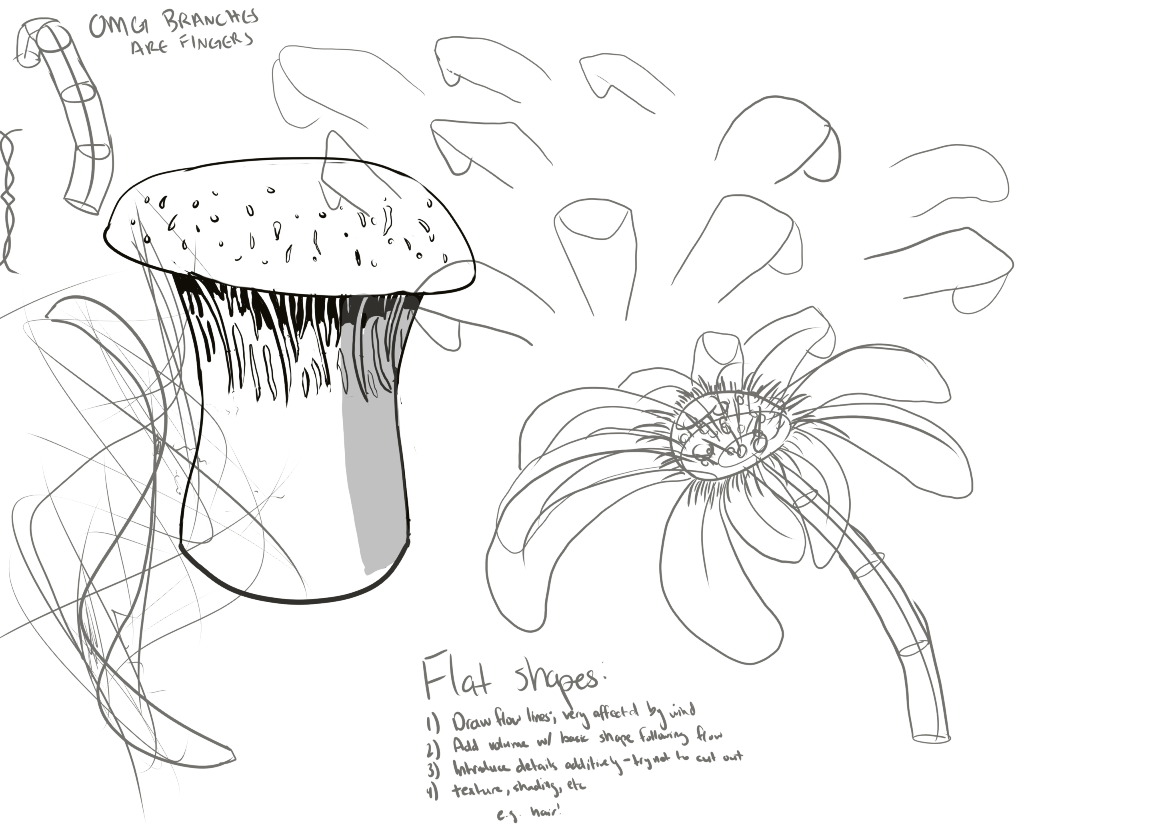 My takes on the mushroom and flower demos from Drawabox
My takes on the mushroom and flower demos from Drawabox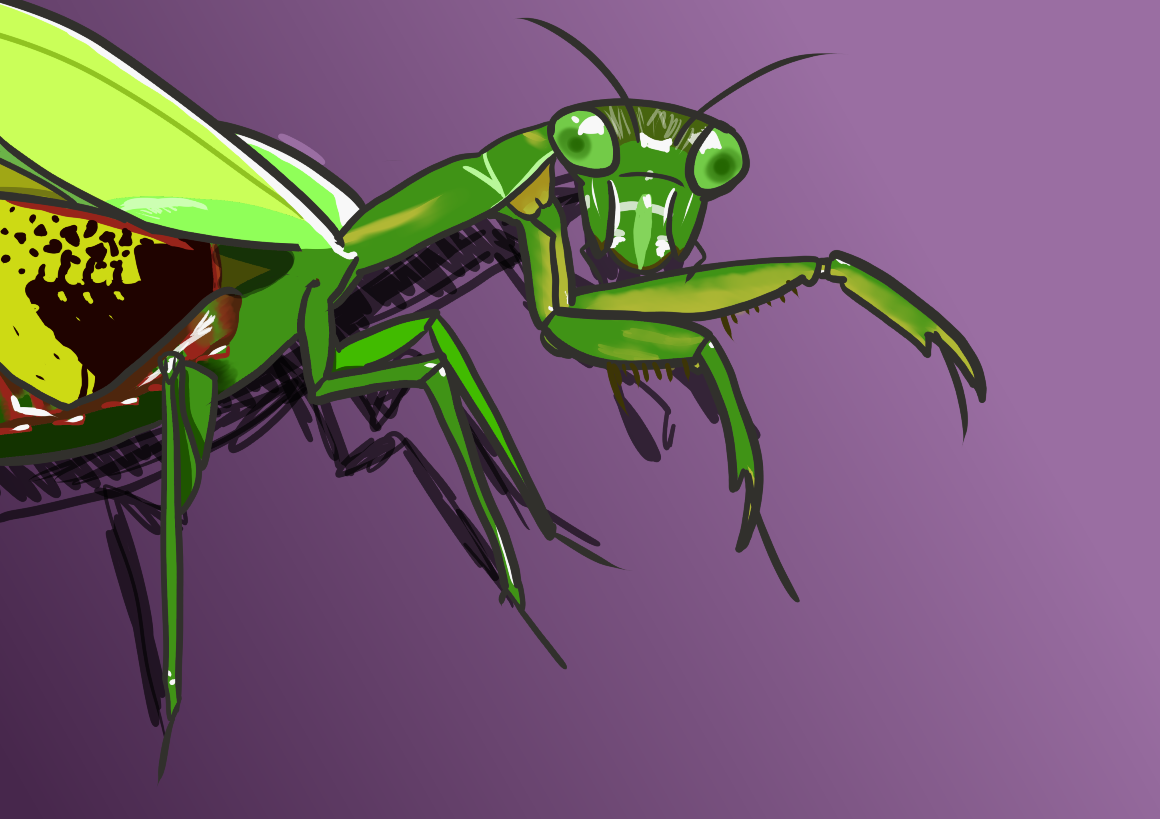 I found a praying mantis in one of my plants which inspired me to draw one
I found a praying mantis in one of my plants which inspired me to draw oneNow I'm drawing whatever art inspires me and seeing where that takes me. I just finished binge-watching Vinland Saga, so I'll be studying the art from there and how the anatomy familiar to me is represented in a unique & stylistic way. As I continue, I'll update this blog post (or write a new one) with the sequel to my learning adventure!!
Comments
No comments yet.